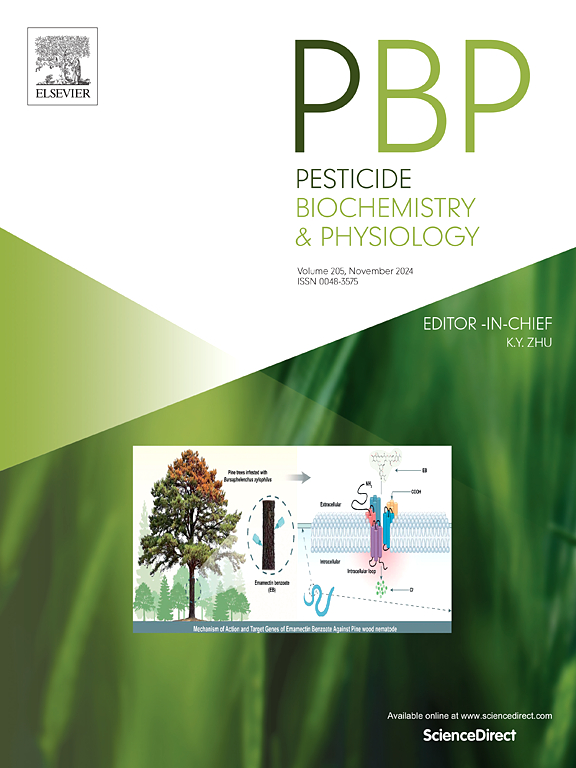Evaluation of thiobencarb herbicide-induced cytotoxicity mediated via disruption of calcium homeostasis in bovine mammary glands: A comprehensive in vitro and in silico study
IF 4.2
1区 农林科学
Q2 BIOCHEMISTRY & MOLECULAR BIOLOGY
引用次数: 0
Abstract
In contemporary agriculture, the predominant strategy for managing perennial weeds within agroecosystems involves the extensive use of herbicides. Thiobencarb is widely employed to control gramineous weeds during rice cultivation. This herbicide is commonly found in terrestrial environments and agricultural products. The harmful potential of thiobencarb has been reported, along with its adverse effects in exposed species. However, few studies have explored thiobencarb toxicity, specifically in dairy cows, despite the possibility of ingestion through soil residues. Exposure to xenobiotics can reduce the viability or impair the function of bovine mammary epithelial cells (BMECs), leading to compromised immune function and reduced milk production. Despite the known cytotoxicity of thiobencarb, its specific effects on BMECs remain unclear. Herein, we aimed to investigate the effect of thiobencarb on milk production by examining its toxic effects and underlying mechanisms in BMECs. We assessed the cytotoxic effects of thiobencarb and analyzed various cellular responses upon exposure. Thiobencarb-induced apoptosis was associated with disrupted calcium homeostasis. Additionally, thiobencarb modulated AKT/MAPK proteins and increased mRNA levels of genes related to the inflammatory response. Furthermore, treatment of BMECs with thiobencarb suppressed the expression of genes related to milk production, including those encoding superoxide dismutase, tight junctions, and casein. Finally, we conducted an in silico molecular docking analysis to evaluate the binding affinity between thiobencarb and target proteins.

求助全文
约1分钟内获得全文
求助全文
来源期刊
CiteScore
7.00
自引率
8.50%
发文量
238
审稿时长
4.2 months
期刊介绍:
Pesticide Biochemistry and Physiology publishes original scientific articles pertaining to the mode of action of plant protection agents such as insecticides, fungicides, herbicides, and similar compounds, including nonlethal pest control agents, biosynthesis of pheromones, hormones, and plant resistance agents. Manuscripts may include a biochemical, physiological, or molecular study for an understanding of comparative toxicology or selective toxicity of both target and nontarget organisms. Particular interest will be given to studies on the molecular biology of pest control, toxicology, and pesticide resistance.
Research Areas Emphasized Include the Biochemistry and Physiology of:
• Comparative toxicity
• Mode of action
• Pathophysiology
• Plant growth regulators
• Resistance
• Other effects of pesticides on both parasites and hosts.

 求助内容:
求助内容: 应助结果提醒方式:
应助结果提醒方式:


